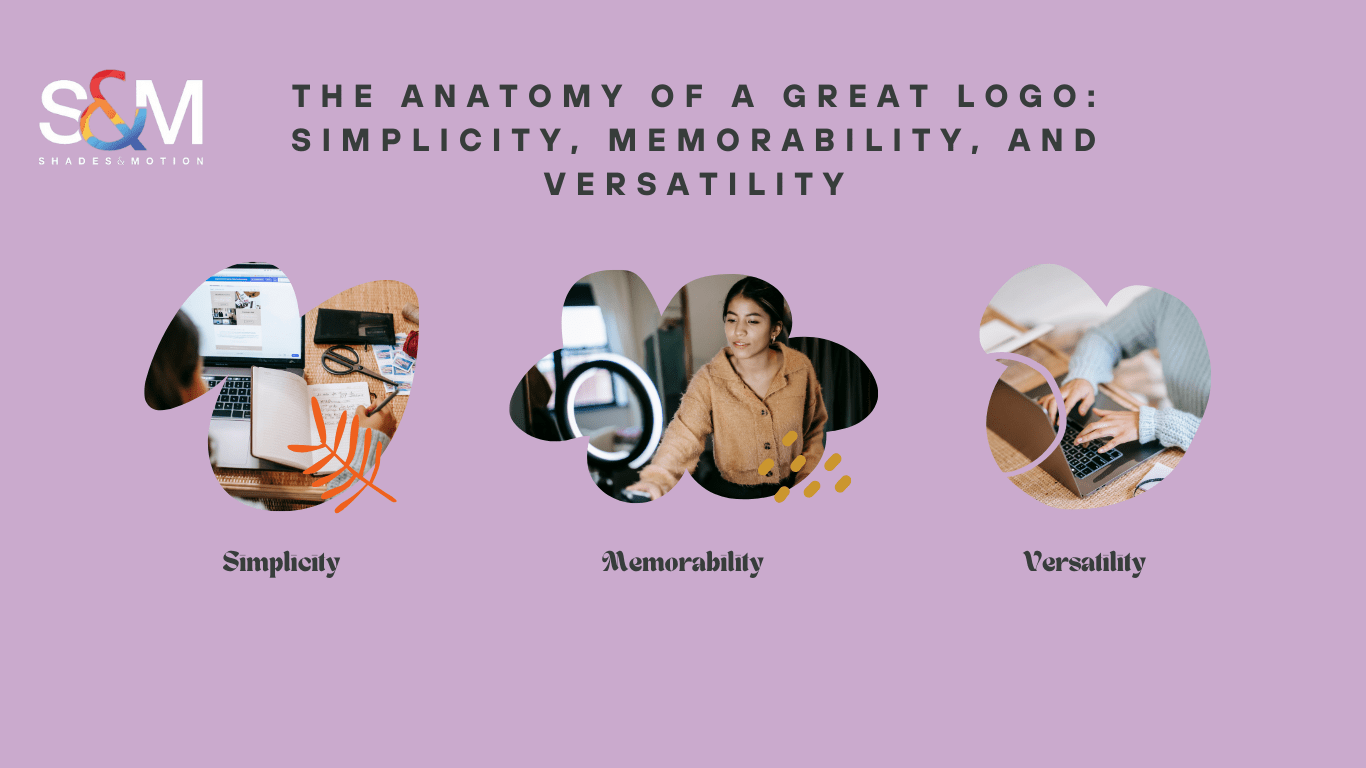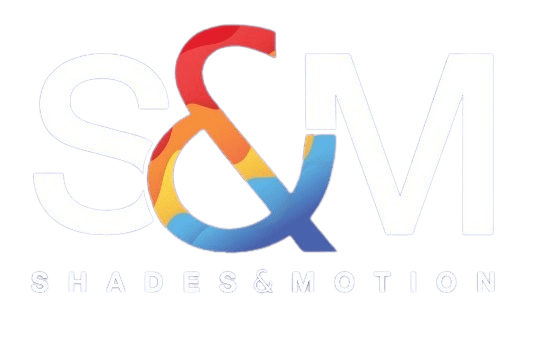

The Anatomy of a Great Logo: Simplicity, Memorability, and Versatility
In today’s saturated visual landscape, a logo is often the first and most enduring impression a brand makes. It’s a visual shorthand that encapsulates the essence of a company and serves as a beacon of recognition. But what separates a forgettable logo from an iconic one? The answer lies in a delicate balance of three key elements: simplicity, memorability, and versatility.
1. Simplicity is Key:
Imagine a billboard speeding past you on the highway. What details can you truly register? A complex logo with intricate details will likely get lost in the blur. Effective logos are clear, concise, and easily recognizable at a glance. Think of the swoosh of Nike or the bitten apple of Apple – instantly recognizable and devoid of unnecessary clutter. Simplicity allows for better recall and ensures the logo translates well across different mediums, from business cards to billboards. For this hire the best logo design services in the city.
2. Memorable Magic:
A great logo doesn’t just exist; it sticks in your mind. Memorability is what makes a logo truly impactful. This can be achieved through a unique design element, a clever use of color, or even a touch of negative space (think of the FedEx arrow cleverly hidden between the “E” and “X”). Memorable logos often evoke emotions or associations with the brand they represent. The golden arches of McDonald’s instantly trigger thoughts of a juicy burger, while the vibrant red and white stripes of Coca-Cola bring to mind refreshment and happiness.
3. Versatility: Standing the Test of Time and Trends:
Trends come and go, but a great logo should have staying power. Versatility ensures your logo remains relevant and effective across various applications. This means designing a logo that can be scaled down for a mobile app icon or blown up for a building facade without losing its impact. Consider logos like Target’s bullseye or Adidas’ trefoil – they’ve endured for decades because they are adaptable and can be used in various contexts without compromising their core design.
Beyond the Basics:
While simplicity, memorability, and versatility are the cornerstones of a great logo, there’s more to consider. Colour psychology plays a crucial role – a vibrant palette can exude energy, while subdued tones convey sophistication. The use of typography can also be significant, with certain fonts evoking specific emotions or brand characteristics.
Crafting a Legacy:
A well-designed logo is an investment in your brand’s future. By prioritizing simplicity, memorability, and versatility, you create a visual identity that resonates with your audience and stands the test of time. Remember, your logo is a silent ambassador; make sure it speaks volumes about your brand.
Types of Logo Can be Made
Wordmark
The styled representation of your company’s name. We focus on typography in this style.
Lettermark
We design the initials of your company’s name in the logo to give it a nice look like a brand.
Brandmark
Let us say you want a bird in your logo, we will create it in a way that will look amazing to picture your brand. It works well for companies with a strong visual identity.
Combination Mark
In this type of logo, we integrate a wordmark and symbol. It provides flexibility for the different marketing purposes.
Emblem
An emblem combines a wordmark or lettermark with pictorial elements often arranged within a distinct shape.
Designing a Perfect Logo for you!
Designing a perfect logo is a subjective ideal, but there are certain steps you can take to create a highly effective and memorable logo. Here’s a breakdown of the process:
1. Define Your Brand Identity:
Before diving into sketches, take a step back and solidify your brand identity. What are your brand values? What message do you want to convey? Who is your target audience? Answering these questions will guide your design choices and ensure the logo aligns with your overall brand strategy.
2. Research and Inspiration:
Immerse yourself in the world of logos! Look at successful logos in your industry and beyond. Analyze what makes them work – is it the simplicity of Nike’s swoosh, or the playfulness of the Lacoste crocodile? Take inspiration, but avoid direct copying.
3. Brainstorming and Sketching:
Now comes the creative fun! Sketch out a variety of logo concepts based on your brand identity research. Experiment with different shapes, fonts, and color combinations. Don’t be afraid to get messy and explore various possibilities.
4. Refine and Simplify:
Once you have a handful of promising sketches, it’s time to refine them. Focus on simplicity – can elements be removed to make the logo more impactful? Ensure the design is clear and readable at different sizes.
5. Choosing the Right Colors:
Colours evoke emotions and play a significant role in brand perception. Research colour psychology and choose colours that align with your brand message. Consider the target audience and what colours might resonate with them.
6. Picking a Font:
The font you choose can significantly impact the overall feel of your logo. Opt for a font that complements the design and reflects your brand personality. Sans-serif fonts are generally more modern and versatile, while serif fonts can convey a sense of tradition or elegance.
7. Feedback and Iteration:
Get feedback on your logo design from trusted colleagues, potential customers, or even a design forum. Be open to constructive criticism and use it to refine your logo further.
8. Testing and Versatility:
Make sure your logo looks good not just on a screen, but also on different applications. Test it on business cards, t-shirts, and even your website mockup. A versatile logo should adapt and maintain its impact across various mediums.
9. Final Touches and Legal Considerations:
Once you’re happy with the final logo design, ensure it’s created in a vector format for scalability. Also, conduct a trademark search to confirm the logo isn’t already in use.
Remember: There’s no one-size-fits-all approach to logo design. The key is to prioritize the core principles of simplicity, memorability, and versatility. By following these steps and keeping your brand identity at the forefront, you can create a logo that serves as a powerful visual representation of your brand for years to come.
Conclusion
A well-designed logo isn’t just an image; it’s a cornerstone of your brand identity. By prioritizing simplicity, memorability, and versatility, you create a visual language that not only resonates with your audience but also lays the foundation for a lasting brand legacy. Remember, a thousand words can be worth a picture, but a truly great logo can spark a thousand stories. So, take the time to craft a logo that embodies the essence of your brand and watch it become a symbol of recognition and trust for years to come. Or just hire the online logo design services at Shades and Motion.
FAQ
Q. What are the different types of logos?
- There are five main types of logos- Worldmark, Lettermark, Brandmark, Combination mark, and Emblem.
Q. Can I design my own logo?
- Yes, you can design but to beat the competition you need the best design for your brand. Shades and Motion can create the best logo design for you.
Q. How long does it take to design a logo?
- The logo creation timeline depends on the design’s complexity and the number of revisions required. However, a simple logo design process might take 1-2 weeks.
Q. What should I look for in a logo designer?
- You need to check the portfolio of the designer, experience, style of communication, and revision policy of the designer.


Leave a Reply